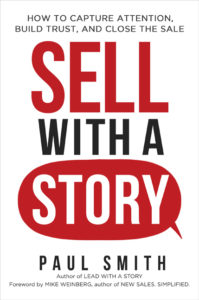Although they might not complain about it, most buyers would admit that they wouldn’t respect a salesperson who caved on every special request. But they won’t do business long with someone who never does.
The truth is that in disagreements between supplier and customer, sometimes one side has a better argument and sometimes the other. Most buyers want a sales rep who can engage in a fair-minded assessment of the disagreement and passionately lobby on their behalf when the buyer is right.
But you can’t just tell your prospects, “I’ll go to bat for you.” And if you wait around for them to learn that on their own, you might not ever land them as a client. The best solution is to share the story of when you’ve done that before. Here’s a case in point.
In 2012, Xerox was in a sticky situation with Huntington National Bank. Xerox was in the middle of a five-year agreement to provide Huntington with its printer, copier, and paper needs. Huntington was looking for ways to save money on office expenses and asked Xerox for some ideas to reduce paper usage. The problem with that, of course, was that it would mean lower revenues for Xerox. So the Xerox people told Huntington that they would do so, but only after the end of the current contract.
So the folks at Huntington did what most people would do in that situation. They figured out a way to reduce their paper usage on their own—25 percent less, as it turned out. Facing a significant loss of income on that account, Xerox invoked a provision in the contract to raise the price per page if volume fell below a certain level. That, of course, didn’t sit well with Huntington, which refused to pay the higher price and threatened to cancel the contract entirely.
The result was exactly the kind of stalemate that puts salespeople in a bad spot. What’s a good account rep to do? Demand the customer abide by the contract and pay up? Or go to bat for the customer at headquarters and try to get the contract changed?
Well, the guy Xerox put in that spot was Eric Storey. Eric met with parties at both companies, investigated the facts, and made a fair-minded assessment of the situation. Among other things, he discovered that Xerox was already providing new customers with the kind of innovation that Huntington was asking for—the kind that reduces paper usage significantly. Xerox just wasn’t offering it to Huntington yet because they were in the middle of the contract.
Both sides felt thoroughly justified in their position. But it was this last fact that convinced Eric that Xerox should back down. He went to his leadership, lobbied hard, and eventually convinced them that he was right. Xerox rescinded the price increase, and accepted the revenue reduction that came with it, earning the good will and respect of a valued customer.
When Eric shares this story with new prospects, they can be confident that when the situation calls for it, he’ll go to bat for them, too.
[You can find this and dozens of other examples and lessons on storytelling in sales in my book, Sell with a Story.]
—
 Paul Smith is one of the world’s leading experts on business storytelling. He’s a keynote speaker, storytelling coach, and bestselling author of the books Lead with a Story, Parenting with a Story, and Sell with a Story.
Paul Smith is one of the world’s leading experts on business storytelling. He’s a keynote speaker, storytelling coach, and bestselling author of the books Lead with a Story, Parenting with a Story, and Sell with a Story.


 Connect with him via email here.
Connect with him via email here.
Follow him on Facebook, LinkedIn, Twitter, and Instagram.
Sign up for his newsletter here to get one new story a week delivered to your inbox.
